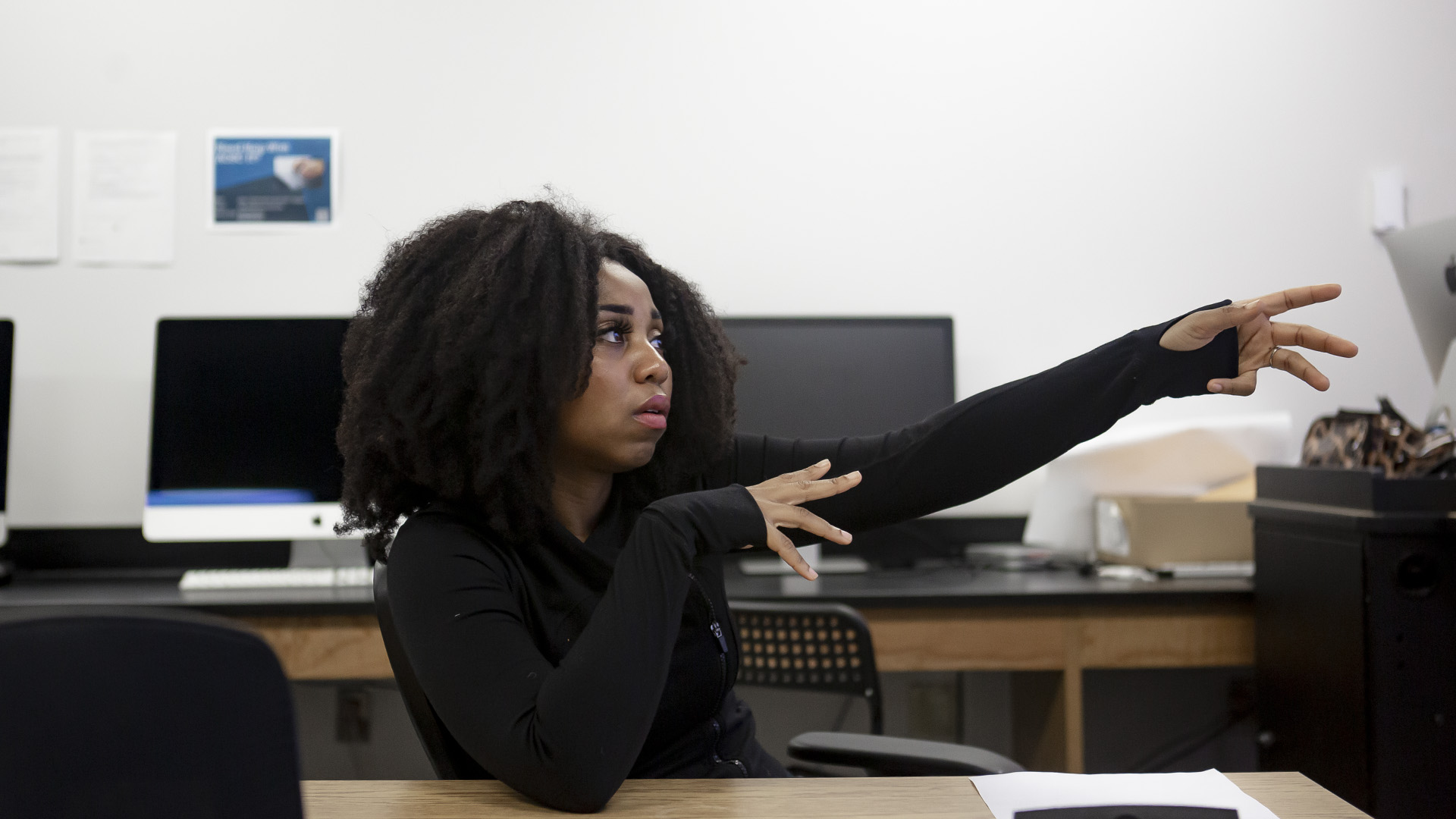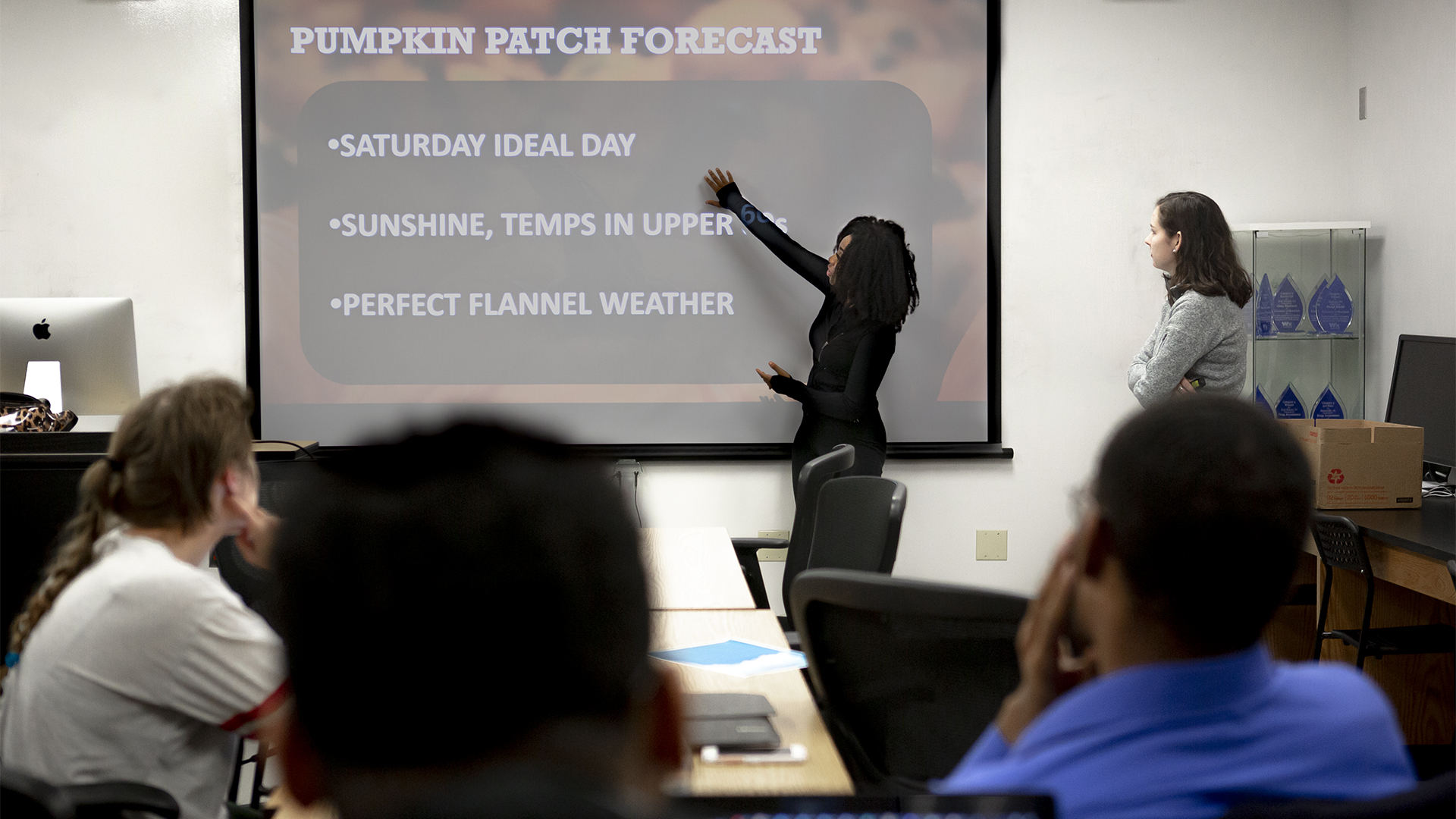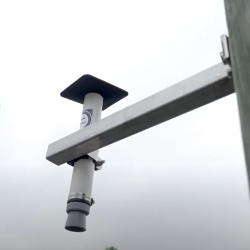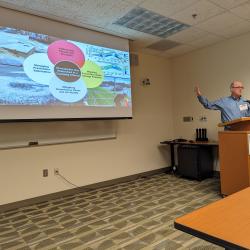Sunny Outlook for New Broadcast Meteorology Class
TV’s Somara Theodore Opens Window Into Translating Science for Viewers
The weather on a recent Thursday afternoon was pleasantly warm, but inside an Atlantic Building classroom, a system of high pressure was moving in.
A student had volunteered to be the first to show classmates his pre-taped weather report, as if he were delivering it to TV viewers. He adopted a welcoming tone as he looked at the camera and said it was a beautiful day on Saturday, but viewers would need their umbrella on Sunday.
Afterward, the instructor, Emmy award-winning meteorologist Somara Theodore, asked him what mistakes he made. Not enough eye contact with the camera, he said. Theodore commended him for recognizing that and added a few critiques of her own to help all the students learn and prepare for life as a broadcast meteorologist.
“We don’t get to make mistakes in private,” said Theodore, a member of StormTeam 4 on NBC Washington. “Most of the mistakes we make are on a big stage.”
Theodore is a new adjunct lecturer at the University of Maryland, teaching the College of Computer, Mathematical, and Natural Sciences’ first broadcast meteorology course.
Students led the effort to create this course, said Tim Canty, director of the department’s undergraduate program. A couple of years ago, Monique Robinson ‘18 created UMD Weather Talks, a student organization of broadcast meteorologist hopefuls that posts reports on YouTube, and contacted Theodore to get advice. Last spring, they asked her about teaching at Maryland. By the fall semester, the course was a reality.
Theodore, a graduate of Penn State, knew she wanted to be a meteorologist at 5 years old after seeing the movie “Twister.”
“Humans have so many differences culturally, demographically, geographically, but weather affects everyone the same,” she said.
Christian Sayles ’21, an aspiring broadcast meteorologist and member of another student meteorology club, UMD Weather, said he’s learned a lot from Theodore in the course. It covers topics ranging from how to match your facial expressions to the forecast and how to conduct yourself in a newsroom.
“She’s very down-to-earth, but she’s very concise,” he said. “I will feel more comfortable now when I apply for a meteorologist job at a TV station. Now I know if there’s a tornado warning you might be on TV for an hour or two hours. That was something that surprised me that I didn’t realize.”
Theodore has also learned how to be a better TV meteorologist through teaching this course, she said.
“I’ve had to teach students things that are second nature to me, so I did not know how to quantify it, and I'm also having to do more research to provide content for the class, which means I'm learning how to become a better presenter.”
Only 4–6% of meteorologists become on-camera personalities, Theodore said, so she hopes the class is beneficial even for those who don’t end up becoming broadcasters.
“I hope that my students are able to feel confident if they decide to go into the television field,” she said. “And if not, I hope that they feel confident when having to publicly speak in any forum.”









